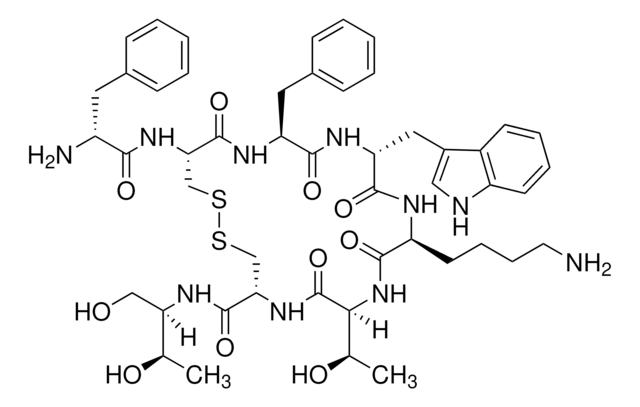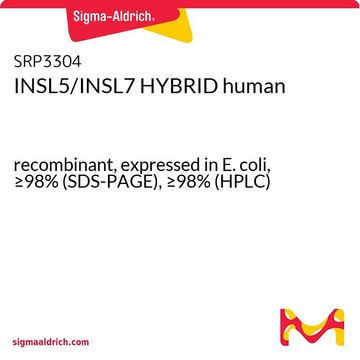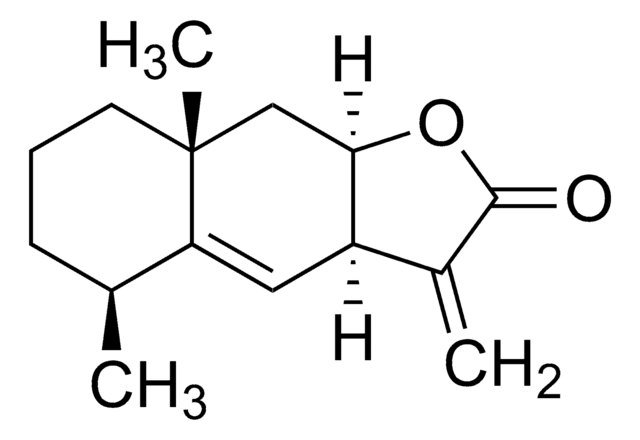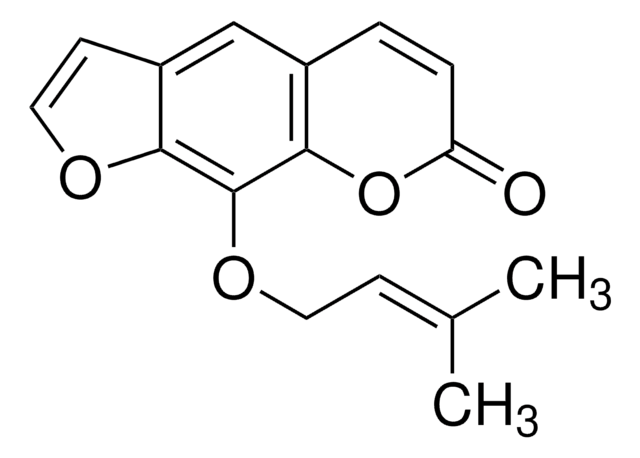SRP6233
Relaxin-3 human
≥98% (SDS-PAGE), recombinant, expressed in E. coli, lyophilized powder
Synonym(e):
H3 relaxin, INSL7, Insulin-like peptide-7
About This Item
Empfohlene Produkte
Produktbezeichnung
Relaxin-3 human, recombinant, expressed in E. coli, ≥98% (SDS-PAGE)
Biologische Quelle
human
Rekombinant
expressed in E. coli
Assay
≥98% (SDS-PAGE)
Form
lyophilized powder
Mol-Gew.
5.5 kDa
Verpackung
pkg of 10 μg
pkg of 50 μg
Verunreinigungen
<1 EU/μg endotoxin (LAL test)
UniProt-Hinterlegungsnummer
Versandbedingung
wet ice
Lagertemp.
−20°C
Angaben zum Gen
human ... RLN3(117579)
Allgemeine Beschreibung
Biochem./physiol. Wirkung
Physikalische Form
Rekonstituierung
Lagerklassenschlüssel
11 - Combustible Solids
WGK
WGK 3
Flammpunkt (°F)
Not applicable
Flammpunkt (°C)
Not applicable
Hier finden Sie alle aktuellen Versionen:
Analysenzertifikate (COA)
Leider sind derzeit keine COAs für dieses Produkt online verfügbar.
Wenn Sie Hilfe benötigen, wenden Sie sich bitte an Kundensupport
Besitzen Sie dieses Produkt bereits?
In der Dokumentenbibliothek finden Sie die Dokumentation zu den Produkten, die Sie kürzlich erworben haben.
Unser Team von Wissenschaftlern verfügt über Erfahrung in allen Forschungsbereichen einschließlich Life Science, Materialwissenschaften, chemischer Synthese, Chromatographie, Analytik und vielen mehr..
Setzen Sie sich mit dem technischen Dienst in Verbindung.






